Approximately 40% of all traumatic ankle injuries occur during sport, with only 50% of people seeking medical attention (Vuuberg et al. 2018). The ankle is comprised of multiple joints and ligaments. As a result, ankle ligament injuries aren’t always as simple as first thought. They can be varied, and an accurate diagnosis is important to ensure correct and effective management. Typically, the lateral ligaments including the ATFL, CFL and PTFL are most commonly injured, however, frequently the AITFL and the syndesmosis can also be injured, and then before you know it, a simple ankle sprain is suddenly not so simple!
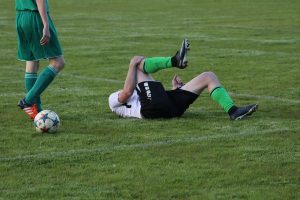
What is the Syndesmosis (High Ankle Sprain)?
The syndesmosis is a complex ligamentous structure that joins the lower leg bones, the tibia and fibula just above the ankle joint. It consists of three different portions or segments, which all play critical roles in providing stability to the ankle joint.
Injuries to the syndesmosis are common, accounting for around 17% of ankle sprains observed in the athletic population (Gerber et al, 1998). There is a higher incidence of syndesmosis injuries in sports involving frequent jumping, directional changes and pivoting. Injury severity can vary from a grade one sprain, to more significant tears, fractures and instability.
These injuries are often a result of a traumatic incident, typically presenting with increased pain and disability in comparison to typical lateral ankle sprains, however, can occur in conjunction with other ankle injuries. Most importantly, an undiagnosed or mismanaged syndesmosis injury is likely to lead to arthritis, ligament ossification, persistent symptoms and poorer functional outcomes.
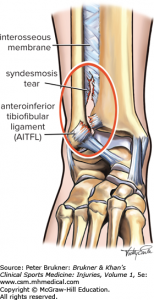
Causes
Syndesmosis injuries are most commonly a result of excessive ankle external rotation (when the foot twists outwards relative to the leg) combined with axial or downward loading of the ankle. They may also be sustained in the presence of an isolated hyperdorsiflexion of the ankle (when your foot/toes go back towards your head). These positions lead to a forceful widening of the ankle mortise, tearing the AITFL and separating the fibula from the tibia. Increased severity and force can tear the deltoid ligament, PITFL and interosseous ligament and cause a fibula fracture (known as a Maisonneuve Fracture) leading to pronounced instability.
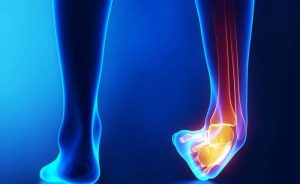
Risk Factors
- Male – 3x more likely than females
- Football, rugby, skiing participation
- Higher level of athletic competition
- Previous history of ankle sprain
- Incomplete previous ankle rehab
Is physiotherapy something that can help?
Physiotherapy, first and foremost, plays an important role in accurately assessing and diagnosing a syndesmosis injury. This is particularly important due to the poor outcomes associated with mismanaged/misdiagnosed syndesmosis injuries.
Initially our Physio’s will refer on for appropriate radiological imaging which may include an x-ray &/or MRI if clinically indicated. Sometimes a referral to an orthopaedic surgeon/surgery is required before physio rehab for unstable injuries, however in a stable syndesmotic injury, conservative physiotherapy management is indicated. In this instance our physio’s develop an individualised treatment plan.
Initial management includes the use of bracing or a CAM boot to provide stability and protection, whilst allowing weightbearing. The use of crutches may assist with promoting optimal mobility. Manual therapy plays an important role in gaining symptom relief, restoring ROM and managing muscle compensations. Integral to recovery, is the physio led progressive exercise program helping to improve gait abnormalities, weakness, proprioception deficits, balance, range of motion and eventual progression to safe return to sport/activity. Our rehabilitation involves the introduction of functional and sport specific exercises tailored to the goals of the patient including running, jumping and agility drills. Physiotherapy also includes the evaluation of biomechanics and the kinetic chain to ensure the successful return to sport and prevention of subsequent injuries. The comprehensive rehabilitation of a syndesmosis injury leads to a reduced chance of developing ankle arthritis in later life.
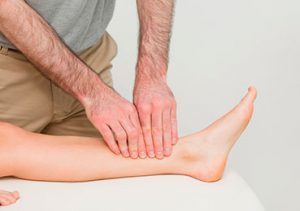
What does the evidence say?
Recent evidence has shown that the prevalence of syndesmosis injuries is as high as 25% of all ankle injuries (Hunt et al 2013). It is widely accepted that mismanaged syndesmosis injuries can lead to early ankle arthritis and persistent pain (Bauer 2009). Miller et al (2014) states effective diagnosis/classification is essential to management, with grade 2 & 3 injuries requiring surgical fixation, whilst rehabilitation was described as a 3-phase program by Williams et al (2010). The three phases involve initial joint protection and minimising symptoms (the use of a CAM boot or Brace) followed by a period of normalising range of motion, strength and function prior to advanced neuromuscular and sports specific training. Punt et al (2015) demonstrated the importance of ankle rehabilitation with improved gait and pain parameters versus no rehabilitation whilst Cleland et al (2013) showed the addition of manual therapy to an exercise program further enhanced the function and recovery of ankle injuries.
If you have an ankle injury or pain, whether it’s a simple ankle sprain or a more severe syndesmosis injury, then in order to get the best outcome it’s definitely worth getting an assessment ASAP by our team of professional physiotherapists.

Have you injured your ankle?
GET AN ASSESSMENT & TREATMENT WITH OUR AMAZING PHYSIO TEAM.
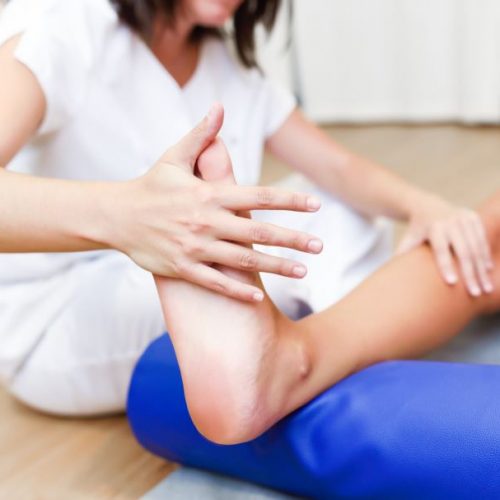
- Get crystal clear on about what’s causing your pain or injury
- Understand what activities you can do without suffering consequences of ankle pain
- Find out the simple yet essential exercises that can help you achieve the best result
- Leave the session with the confidence of knowing exactly what to do to help you get symptom free and back to sport and activity living life without pain & dysfunction

